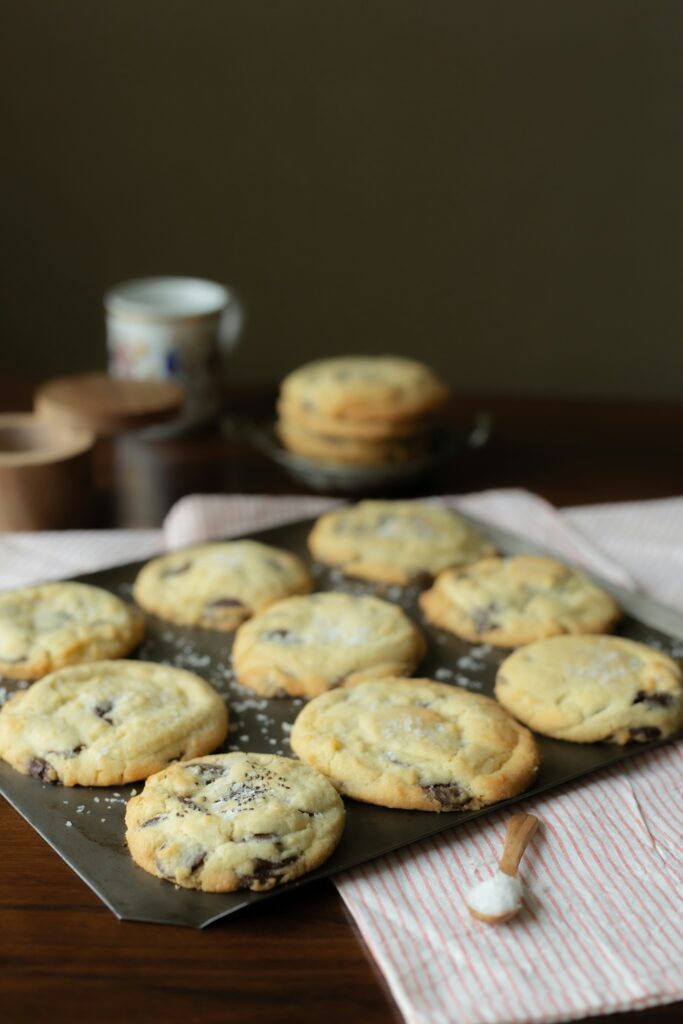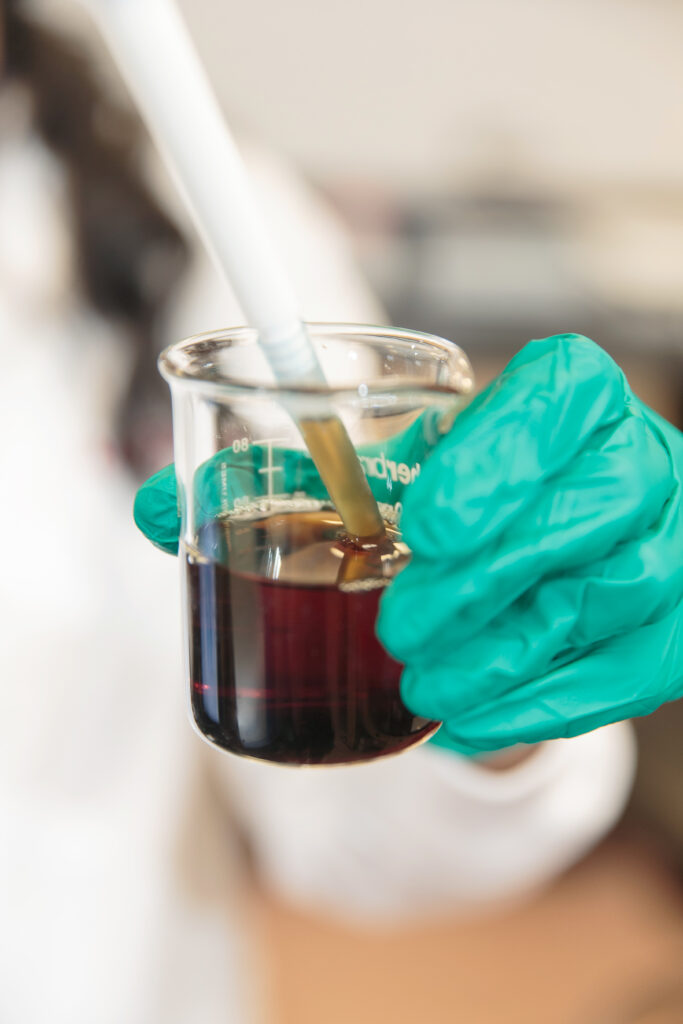Making sure that our food is safe, high quality, and nutritious is what Dr. Maria Corradini, Arrell Chair in Food Quality, does best. In her research program, Dr. Corradini uses a number of very high-tech tools to dive deep into the qualities of the food on our plate.

A tray of cookies.
Ensuring our cookies are safe: Examining Acrylamide
Acrylamide is a chemical that occurs naturally in many plant-based foods, especially when cooked or exposed to high heat. Acrylamide, however, has been linked to cancer in animals, and recent regulations in the European Union have required food businesses to reduce acrylamide in their food products. The formation of acrylamide, and techniques to reduce it, is something that Dr. Corradini is studying alongside businesses that make cookies and other baked goods. Through this research, she has discovered that shaping cookies by introducing grooves lower baking times which reduces the formation of acrylamide – a finding that is being implemented by partners to make healthier cookies. In collaboration with Dr. Iris Joye and Alyssa Francavilla, they are also developing a new carrier for antioxidants, called a bigel, that can be mixed into baked goods to reduce the formation of acrylamide.
It isn’t only cookies that Dr. Corradini is looking at – she is extending this work to look at ways to reduce the formation of acrylamide in corn and other plant-based products.
Making sure our maple syrup is genuine: Fluorescence Fingerprinting
Maple syrup is one of the 10 most adulterated products in the world. Food adulteration – or food fraud – is when an ingredient is replaced – partially or in full – without the consumer knowing. In the case of maple syrup, it may be replaced by a sugar or corn syrup, which may cause allergic reactions or spike blood sugar.
Dr. Corradini’s team expanded the use of fluorescence fingerprinting to detect maple syrup fraud. This technique exposes syrup to UV light, under which it naturally glows, and then maps the intensity of the emitted light by the naturally present glow in the dark compounds in maple syrups. Using this technique, the team was able to identify maple syrup adulteration – even at low levels.
This technique is fast, inexpensive and accurate. It holds promise for industry to be able to identify and address maple syrup fraud throughout the supply chain and keep consumers safe.
This summer, Dr. Corradini shared new research that used fluorescence fingerprinting to better understand the food safety risks of vegetable juices and how these products spoil, thus improving food safety and shelf-life estimates.
By harnessing the power of innovation, collaboration, and collective action we can build a food system that nourishes people and the planet.

Maple syrup in Dr. Maria Corradini’s lab.
Developing healthy, sustainable food products: 3D Printing
3D printing is a novel way of producing food – it involves a printer depositing various food ingredients in a specific order, as determined by a digital model. This innovative technique has a number of advantages – it can reduce food waste, allow for customized nutrition (targeted to, for example, specific energy expenditures); allows us to include uncommon nutritious foods, and produces nutritious food for those with sensory issues.
Dr. Corradini is using 3D printing to examine how the structure of food affects food spoilage by various elements. When bread goes stale, for example, that is a change in the structure of the food.
By using digital models and 3D printing, Dr. Corradini is able to vary microscopic elements of food structure, which helps her to understand how food deteriorates, and what changes we could make to reduce food spoilage and waste.
This is just a snippet of Dr. Corradini’s wide-ranging expertise in food safety and quality; for more information, please contact her at her email: mcorradi@uoguelph.ca
Related Reads:
Arrell Food Institute Co-Director of National Network Awarded under Lab to Market Initiative